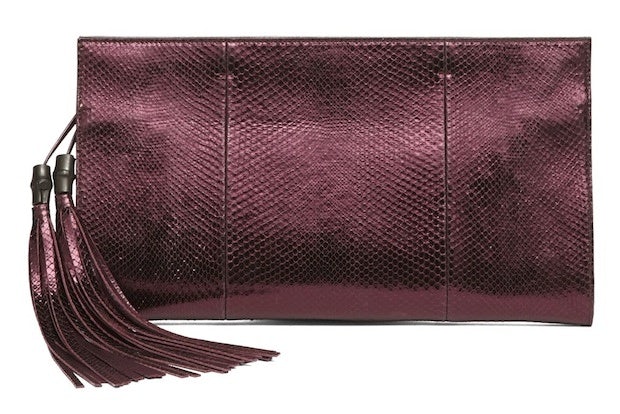
A logo-free Gucci bag in the label's S/S 2014 ready-to-wear collection. Gucci said on a conference call yesterday that it is upping its logo-free offerings as part of an upscale branding push. (WWD)
Global luxury conglomerate Kering reported lower-than-estimated third-quarter growth numbers yesterday due in large part to mega-label Gucci’s China sales slump, showing that Chinese consumer tastes continue to quickly shift toward logo-free products and niche brands.
According to the Paris-based company, sales from continuing operations fell 1.5 percent to $3.48 billion globally, an amount that came in lower than analysts had predicted. Gucci saw 0.6 percent like-for-like sales growth, its weakest performance in four years, which was hampered by a 2 percent comparable growth decline in the Asia-Pacific region and “low single-digit” decline in China. This news comes on the heels of rival conglomerate LVMH’s report last week of lower-than-expected sales as well.
However, Gucci’s disappointing China numbers contrast heavily with the sales growth of Kering’s smaller niche labels, further demonstrating that Chinese fashion tastes continue to move sharply away from logos and “mega-labels” such as Gucci and Louis Vuitton. Fore example, comparatively low-key brand Bottega Veneta posted 21 percent growth in the Asia-Pacific region and almost 30 percent growth in Greater China, and Kering’s collection of smaller luxury brands, including Stella McCartney, Alexander McQueen, and Balenciaga, saw 14 percent Asia growth.
The rise of popularity of niche designer labels in contrast to major logo-focused brands was exhibited this fall in the openings of three major department stores in mainland China: Galeries Lafayette in Beijing and 10 Corso Como and Lane Crawford in Shanghai. In a recent Wall Street Journal interview, Lane Crawford President Andrew Keith stated that Chinese fashion consumers are “looking increasingly for brands that are going to enable them to express themselves in a different way.” This trend prompted the department store, which stocks young international designers such as Proenza Schouler, 3.1 Phillip Lim, and Jason Wu, to re-open in Shanghai this month after previously closing its doors there in 2006.
As a result of the shift away from ostentatious styles and logos that is taking place both in China and abroad, Gucci is stepping up its efforts to “move toward increased product sophistication,” said company CFO Jean-Marc Duplaix on a conference call yesterday. The company has upped its offerings of logo-free styles, which took up 55 percent of total global handbag sales, up 20 percent from the same time last year. According to him, this upmarket shift has been a main cause of this quarter’s lag in Asia sales. “In China, for example,” he said, “the strategic fine-tuning of the brand’s products offered combined with a few store relocations temporarily tempered top-line progression.”
At the same time, LVMH is undertaking a similar strategy by playing up Louis Vuitton’s logo-free leather goods such as its Alma bag in China, as well as teaming up with Alibaba to crack down on fake logo bags sold on Taobao. The question that remains for the future is whether or not these lagging sales are a transitory period for major brands, or if a more permanent shift will push major conglomerates to focus on building up and acquiring smaller labels to diversify their revenue.